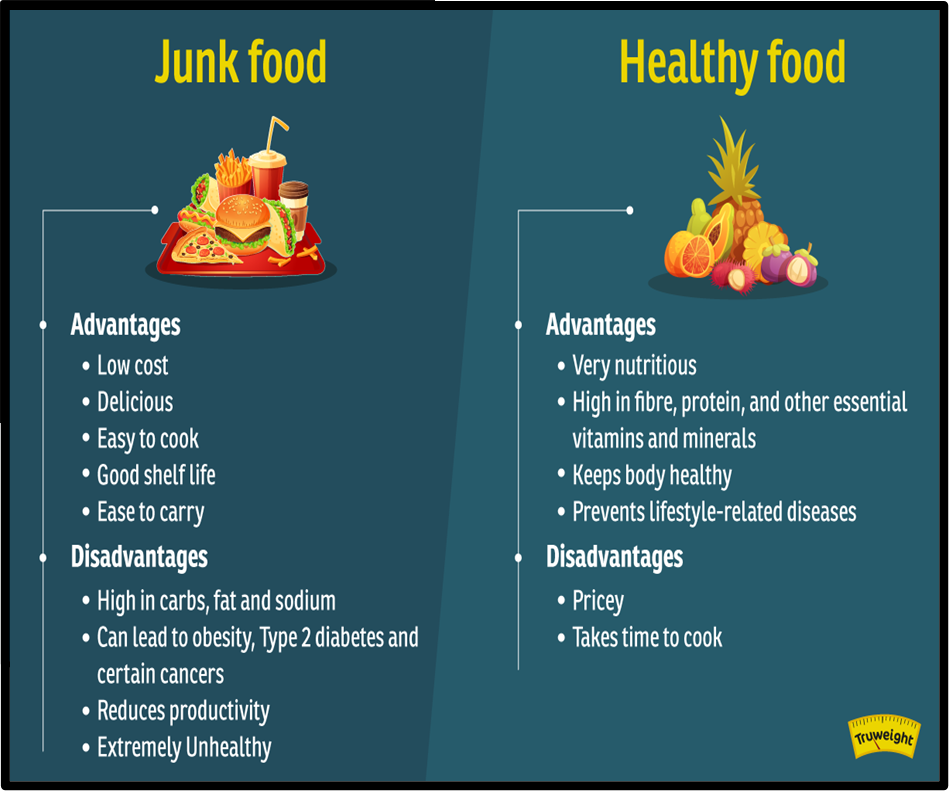TOSS OUT THE JUNK FOOD, BRING BACK THE HEALTHY FOOD PLATE
Source:
GS-II: Issues Relating to Development and Management of Social Sector/Services relating to Health, Education, Human Resources.
Why in the news?
Rising concern over unhealthy dietary habits, fueled by the transition to processed junk foods, prompts calls for regulatory measures.
source:possiblein
About Tackling India’s Nutrition Transition: Prioritising Health Over Convenience
Introduction:
- India is amidst a profound “nutrition transition,” marked by a shift from traditional, fibre-rich diets to processed, calorie-dense Western-style foods.
- Rapid economic growth and urbanisation have fueled this change, leading to increased consumption of packaged and processed foods, commonly referred to as “junk foods.”
- These foods, although convenient, lack essential nutrients like vitamins and minerals while being high in calories, fats, salt, and sugar, posing significant health risks.
What Is Junk Food?
About National Food Security Act (NFSA) 2013:
National Food Security Act (NFSA) 2013:
What is “High in Fats, Salts, and Sugars.”HFSS Foods?
What is the Food Safety and Standards Authority of India (FSSAI)?
|
Understanding the Shift in Dietary Patterns
- Health Implications of Junk Food Consumption
- Scientific evidence highlights the detrimental effects of junk food on health, including weakened immunity, elevated blood pressure, increased blood sugar levels, weight gain, and heightened cancer risks.
- Common examples of junk foods prevalent in India include cookies, cakes, chips, sugary drinks, instant noodles, and canned fruits.
- The surge in lifestyle diseases, such as diabetes, hypertension, and obesity, underscores the grave health consequences of unhealthy dietary habits.
- Influence of Advertising on Food Choices
- Aggressive marketing tactics targeting younger consumers promote the allure of “tasty” and “affordable” comfort foods, contributing to their widespread consumption.
- Studies reveal alarming statistics, with a significant percentage of children consuming packaged foods and sweetened beverages regularly.
- The expansion of the ultra-processed food industry in India reflects the success of these marketing strategies.
About the Government Initiatives and Regulatory Measures:
- Recognizing the urgency to address the rising health concerns, the Government of India has launched initiatives like Eat Right India, the Fit India Movement, and the Poshan scheme to promote healthy diets and active lifestyles.
- Regulatory actions, such as the Food Safety and Standards (Safe food and balanced diets for children in schools) Regulations, 2020, aim to restrict the sale of unhealthy foods in school premises.
- Recent interventions by the National Commission for Protection of Child Rights highlight efforts to curb misleading advertisements targeting children.
- Subsidies for Healthy Foods and Behavioral Change Campaigns
- Positive subsidies for healthy foods like whole grains, fruits, and vegetables can enhance their affordability and accessibility, promoting greater consumption.
- Behavioural change campaigns targeting children and young adults can raise awareness about the health risks of junk foods and promote mindful eating practices.
Challenges and Strategies for Effective Implementation:
- Despite policy interventions, challenges persist in implementing measures to curb junk food consumption effectively.
- Key strategies include implementing front-of-package nutrition labelling to inform consumers about the nutritional content of foods.
- A proposed Indian Nutrition Rating system aims to provide star ratings based on the overall nutritional profile of packaged foods, although concerns regarding its effectiveness and voluntary nature remain.
Way Forward /A Call to Action:
- Urgent measures are needed to address the escalating health crisis fueled by unhealthy dietary habits.
- Clear definitions of unhealthy foods, robust regulatory frameworks, and educational campaigns are essential to empower consumers to make informed choices.
- A concerted effort, involving government, industry, and civil society, is crucial to promote healthier diets and ensure the well-being of future generations.
Conclusion:
In conclusion, junk food, while tempting, lacks essential nutrients and contributes to health issues. Moderation is crucial, as these foods can be addictive. Occasional indulgence is a balanced and sustainable approach for overall health.
Source: The Hindu
Mains Practice Question:
” Analyse the factors contributing to this nutrition transition and its implications for public health. Evaluate the effectiveness of government initiatives and regulatory measures in promoting healthy dietary habits. What additional strategies can be adopted to address the rising prevalence of lifestyle diseases associated with unhealthy diets?




